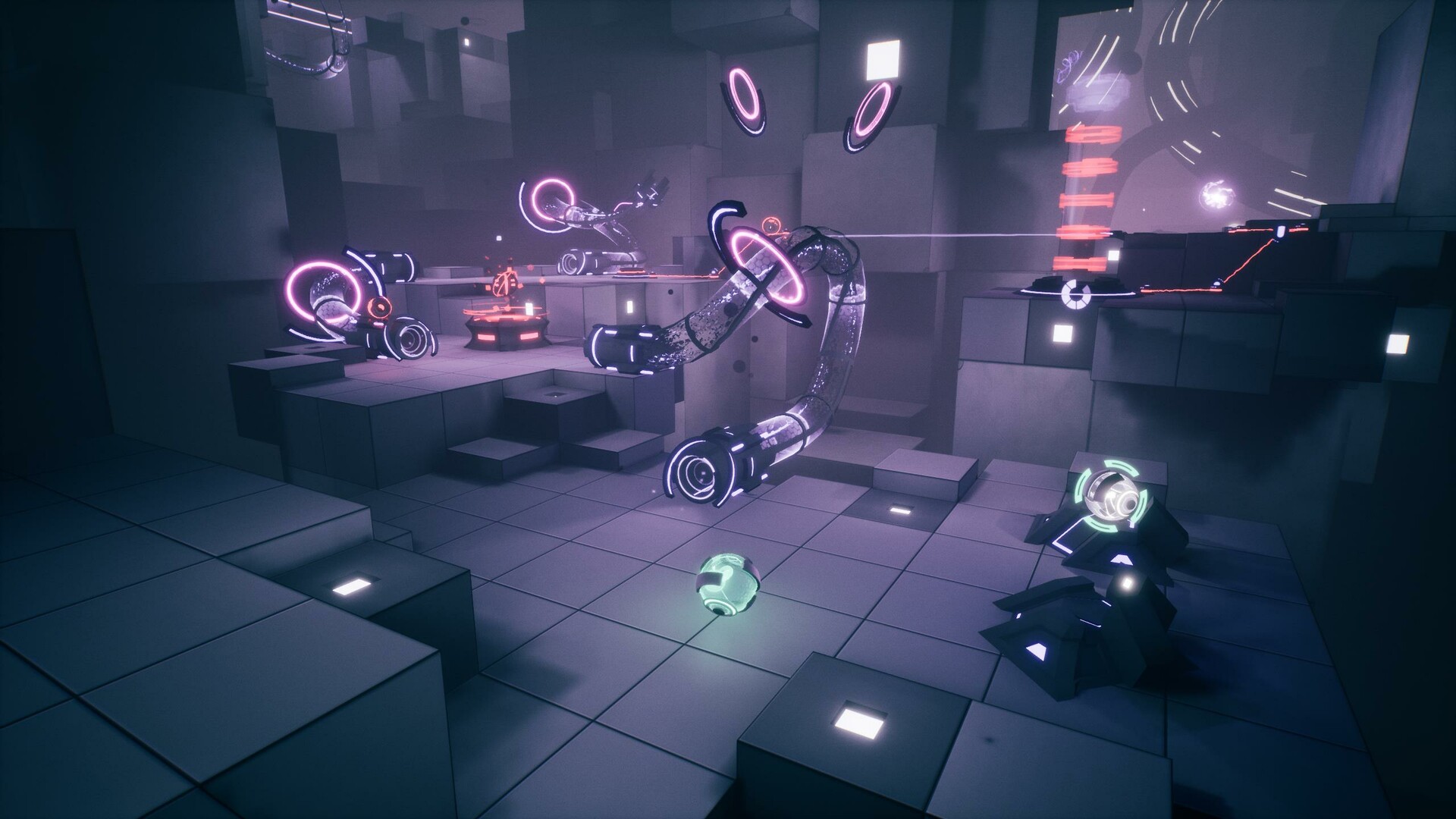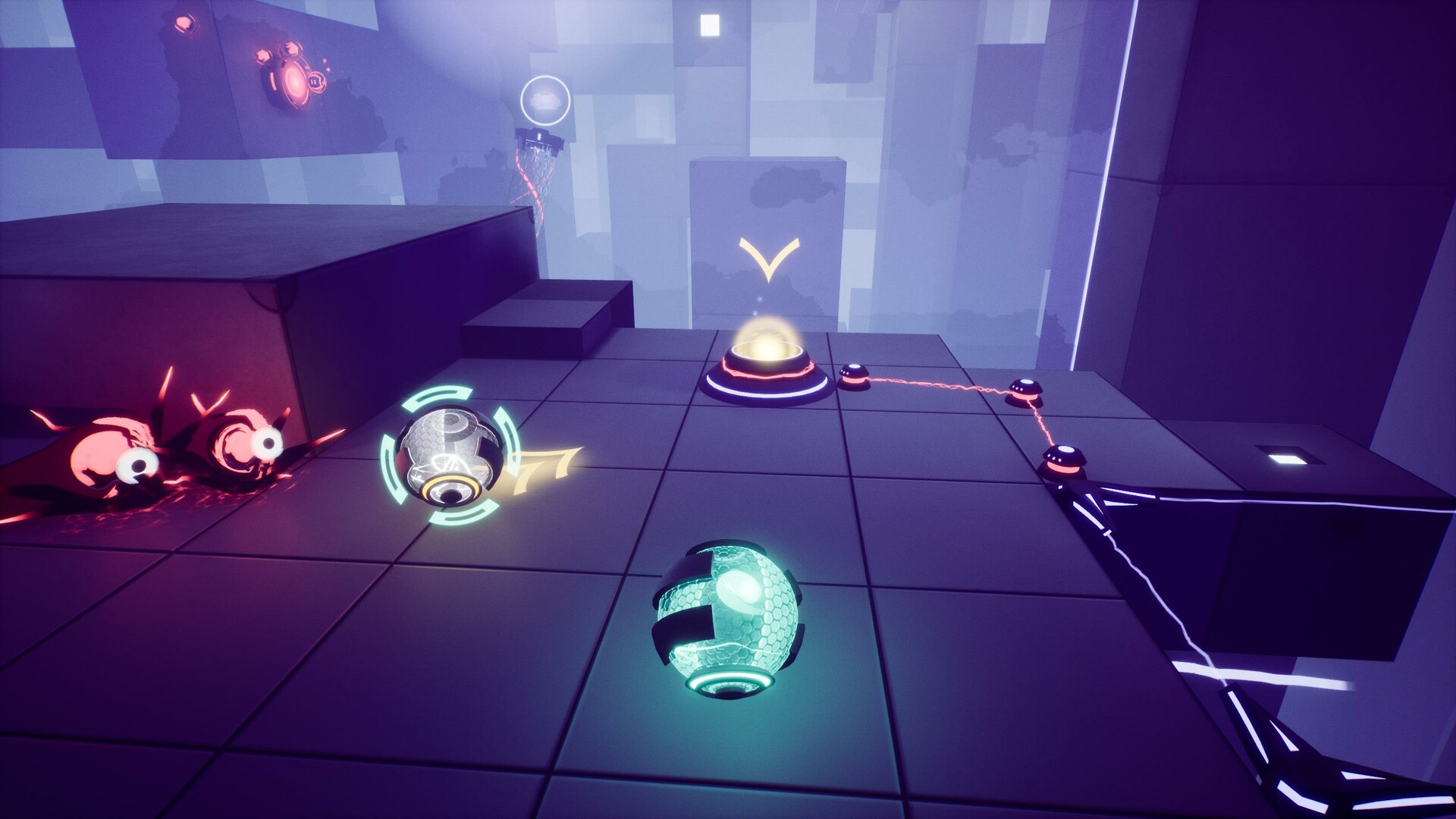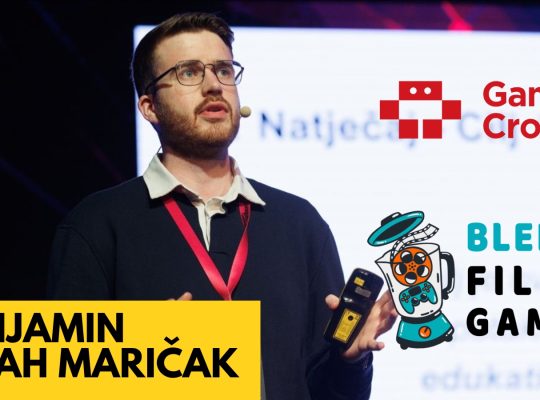Orbyss is an abstract, logic-based puzzle game that released today on PC via Steam and we were intrigued by it the moment we saw it. It was developed entirely by one person, Yannick Audéoud, working under the studio Misty Whale. This game was his passion project for over 10 years, and it features very beautiful graphics and more than 40 hand-crafted puzzle rooms set in a strange, surreal universe.
We had the chance to ask Yannick some questions about the game: we got more details about its design, what it’s like to be a solo developer, any hidden secrets, and everything else you’ll need to know before you start playing his unique game.
Orbyss currently has positive reviews on Steam and if you’re curious and want to learn more, you can also read our full review of the game here.
What was the inspiration behind Orbyss?
I started working on the project after playing a few puzzle games like Portal 2 or Q.U.B.E that inspired me a lot at the time. But there is also more unexpected inspirations. For example, do you know the game series Gobliins from the 90’s? I played it a lot during my childhood. In these games, you can control several little goblins to make them cooperate and perform actions in different places in the scene. I really loved this mechanic, and this gave me the idea for the core gameplay mechanic of Orbyss: the ability to switch between several Orbs, so you can be in several places at the same time, and solve puzzles in a self co-op fashion!
As a solo developer, which part of the development (coding, art, sound, or level design) did you have the most prior experience with, and which required you to learn an entirely new skill set?
Before Orbyss, I already had a decent background in programming and design logic, so implementing core systems felt natural. What I had to completely learn from scratch was visual design, creating 3D environments, materials, and lighting that convey a certain mood without relying on traditional storytelling. That was a steep learning curve. As for sound, I collaborated with musician Pierre Estève (mostly known for his work on the Atlantis games series), who did an incredible job capturing the game’s tone, which helped everything feel cohesive.
Will Orbyss be your first commercial game? Are you excited for the full release?
Yes, Orbyss is my first commercial release, and I’m very excited! In the best way possible. It’s surreal to think that something I’ve been building alone for years will soon be in the hands of players around the world. But I must admit I am also looking forward to the moment when I won’t have to think about this project all the time! Solo development is hard.

The game combines several unique mechanics, including time manipulation. Which one was the most difficult to implement successfully, and which one are you most proud of?
Time manipulation was definitely the hardest to implement. Not technically, but in terms of design clarity. It’s easy for such a mechanic to become confusing or overly complex, especially in a puzzle context. The challenge was to make it intuitive and logical within the game’s system, so players feel like they’re discovering how it works rather than being taught.
The mechanic I’m most proud of is the system that allows the player to switch control between multiple Orbs. It creates really interesting layers of spatial reasoning and timing. I like to call it self co-op, because it’s exactly that!
Can you introduce us to the puzzles? What can players expect, and how difficult are they overall?
The puzzles in Orbyss are all about understanding abstract and logical systems. Each puzzle teaches you a small rule or interaction, and later combines those ideas in unexpected ways.
Everything is designed so that the solution to a puzzle is not hard to execute. You never have to do pixel-perfect jumps, to break physics, and you rarely have limited time to perform your actions. If there is a notion of timing, it is generally just a high limit to avoid going too far in a complex solution. If you feel pressed by the time, it’s probably because you didn’t find the right solution to the puzzle yet.
In terms of difficulty, I’d say it starts approachable and gradually ramps up. It’s not meant to be punishing, but it will definitely challenge your logical thinking and spatial awareness. There is also a hint system when you need it, so you should not be completely stuck!
Do the puzzles gradually get more difficult, or are you keeping the challenge and approachability consistent throughout the entire game?
The progression is quite gradual and almost resets in each new chapter. Each chapter introduces a new concept and gives you time to understand it before layering more complexity. The goal isn’t to overwhelm players but to create a sense of mastery: you start by solving simple interactions, and by the end, you’re combining several mechanics seamlessly. That’s the kind of “aha!” progression I love in puzzle design.
Controlling multiple Orbs is the core mechanic, so you discover it in the first chapter and reuse it almost everywhere.

The game looks futuristic and modern. What can you tell us about Orbyss’s setting and lore?
Orbyss takes place in an abstract digital realm, with a Tron-esque style and bioluminescent lifeforms. There’s no traditional story or dialogue: the world itself is the narrative. The structures, creatures, and atmosphere can hint at a lot of different ideas. It’s up to the player to interpret what Orbyss really is. I wanted the environment to feel both alien and meditative, like walking inside a machine built for contemplation.
In this world, you are a firefly of energy, navigating from Orb to Orb, giving them life, and reviving the mysterious universe around you. You quickly discover that an evil shadow wants to interfere with your quest and grows ever more menacing…
Is sound very important for the atmosphere and the overall player experience?
The sound is important in Orbyss in two main ways: puzzles, and atmosphere.
As soon as the game starts, you discover that Orbyss is not only about visual puzzles and physics. There are several sound-based mechanics all along the game, with an accessibility option to be able to play without the sound. If you leave this accessibility option deactivated, listening to the sound becomes necessary to solve some puzzles, and that can be very satisfying!
The sound design and music are also crucial to creating the game’s atmosphere. Since Orbyss doesn’t rely on dialogue or text, sound becomes the emotional language of the world. Musician and sound designer Pierre Estève did a great job creating an ambient and minimalistic electronic music, evolving subtly as you progress, while the sound effects are designed to make every interaction feel tangible and satisfying.
Will there be any hidden levels and collectibles for players to seek out?
No entire hidden levels, but Orbyss has a few hidden secrets for players who like to explore and experiment. Most of them are actually hinted at in the achievements.
Speaking of achievements, they create a lot of additional challenge in Orbyss, like solving each room with the minimum possible switches between Orbs. A bit like the Portal 1 “least portals” challenges. I designed the achievements to be actually interesting logical challenges, and not just things that are hard to execute or to find.

For players aiming for a full playthrough, how long will it take us to beat the game?
It depends on how familiar you are with puzzle games. On average, the main story mode will take between 5 to 8 hours, though it can be longer if you like to take your time exploring, experimenting, or solving everything without hints. I designed it to be a focused, immersive experience. Not too long, but dense with ideas and gameplay mechanics.
If you want to get all the achievements, I can’t say precisely, but you may want to spend at least 10 more hours.
How’s been the game’s reception so far?
The reception has been really positive, especially from puzzle fans who enjoy atmospheric and abstract games. People seem to love the main gameplay mechanic (switching between Orbs), and are also intrigued by the visual style, which is very encouraging because that’s not my main strength initially! The demo feedback helped me polish a lot of details before release, and it’s been great to see players connect with the tone I was aiming for.
How difficult is it to promote your game as a solo developer considering the huge competition? What is something you’ve struggled with the most on the marketing side?
Marketing is definitely one of the hardest parts of solo development, and I know I have done a lot of basic marketing mistakes. Creating the game is already a huge job, and learning how to sell it is another one entirely. Competing for visibility on Steam and social media is tough, especially with very limited time and budget (I work on this game in my free time…).
The biggest struggle has been maintaining consistency, posting regularly, running ads, building awareness, all while still developing and testing. But I’ve learned a lot from the process. And since a few month, I also started working with an incredibly PR agency (Critical Hit PR), who helped me a lot for things I just wouldn’t have been doing alone.
Finally, what’s your opinion on the current state of the gaming industry and the indie scene, especially considering your experience as a solo developer?
I think the indie scene is both more competitive and more exciting than ever. It’s true that visibility is harder to achieve, but the diversity of ideas out there is incredible. Small teams are still constantly pushing boundaries, even solo developers, experimenting with design, and exploring emotions that big studios rarely touch.
I can’t say a lot about the industry in general, as I am a bit of a lone wolf, working at home in my free time. But I know a lot of players are looking for experiences that feel personal, handcrafted, and meaningful. That’s where indie games, and solo projects especially, have something really special to offer.











